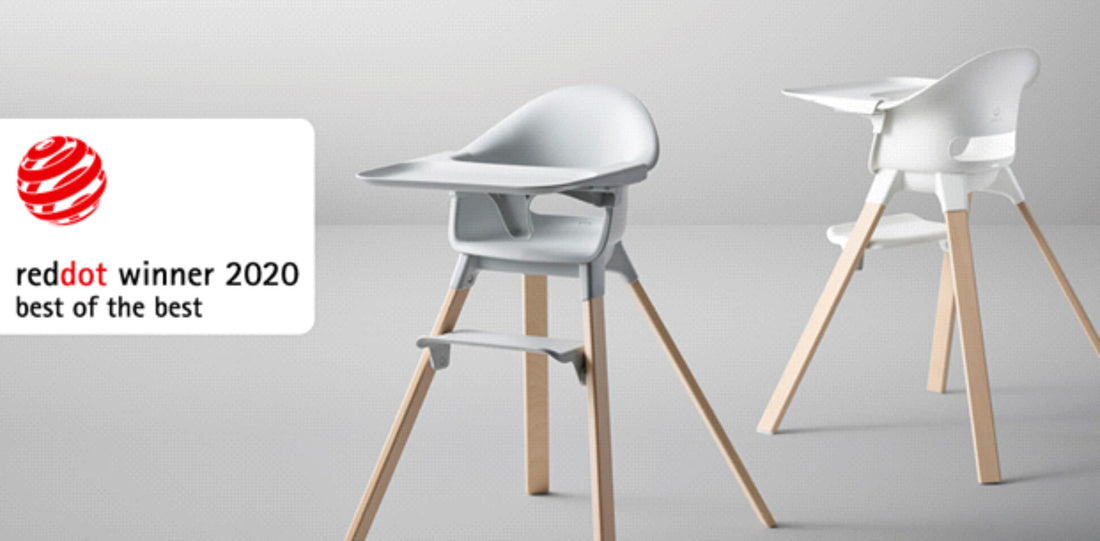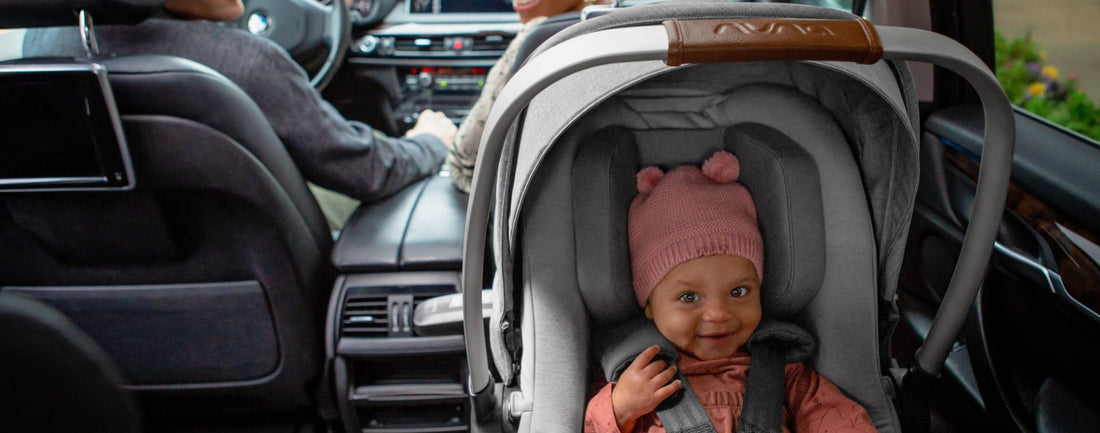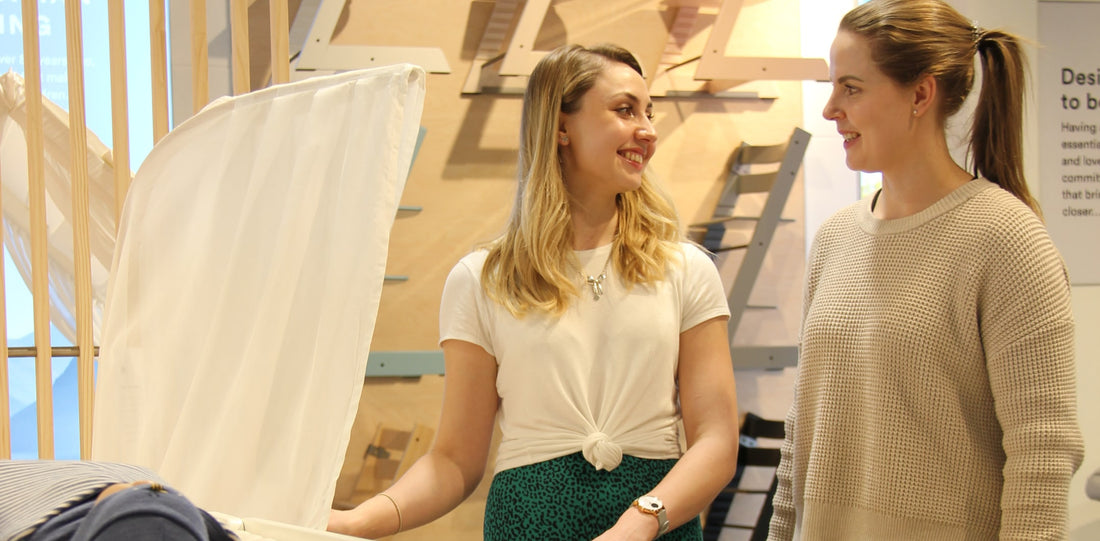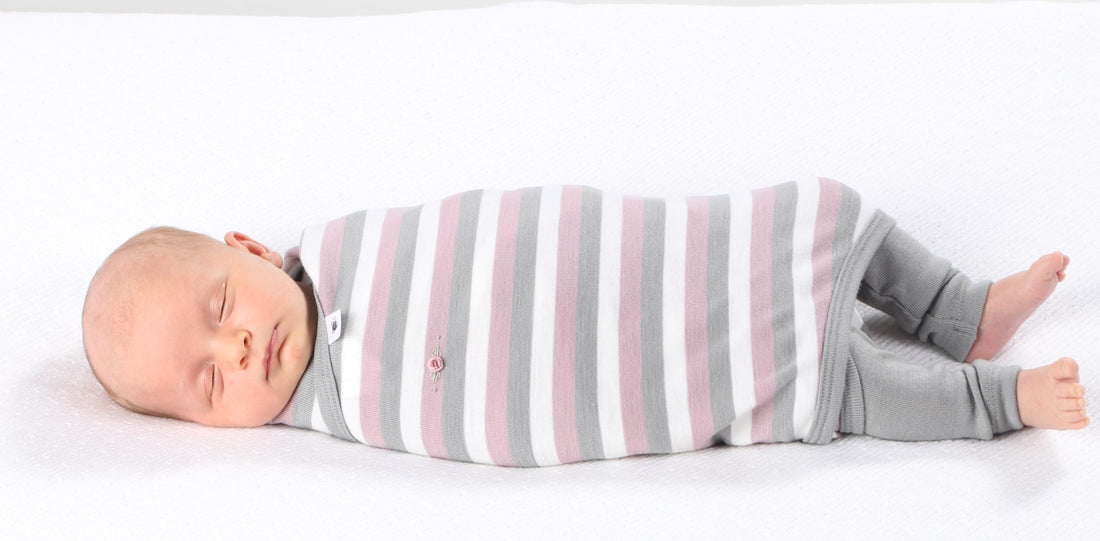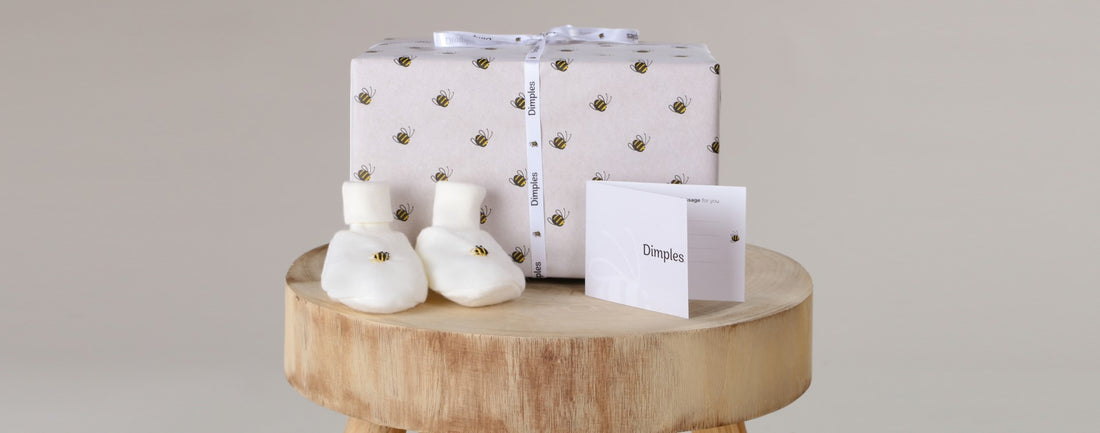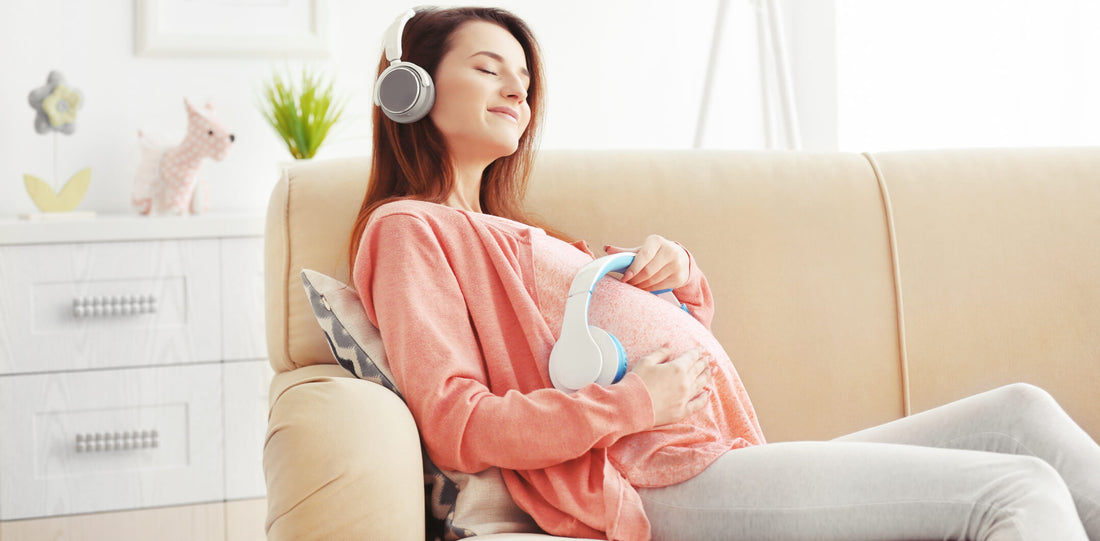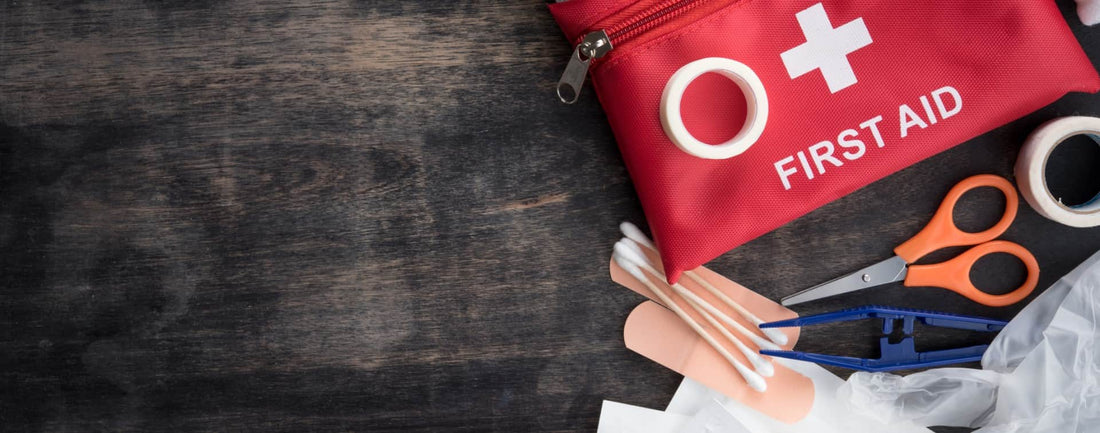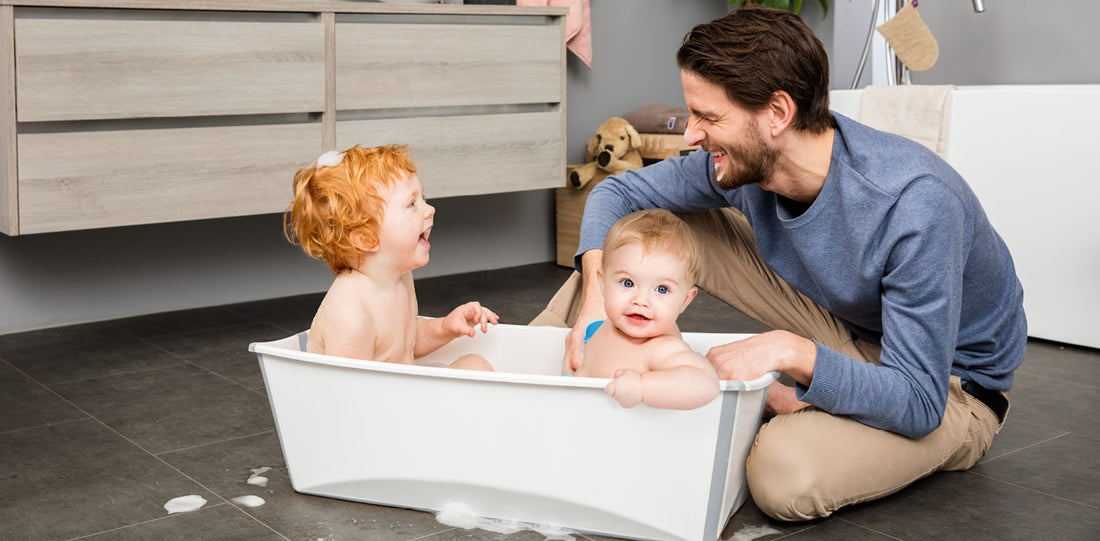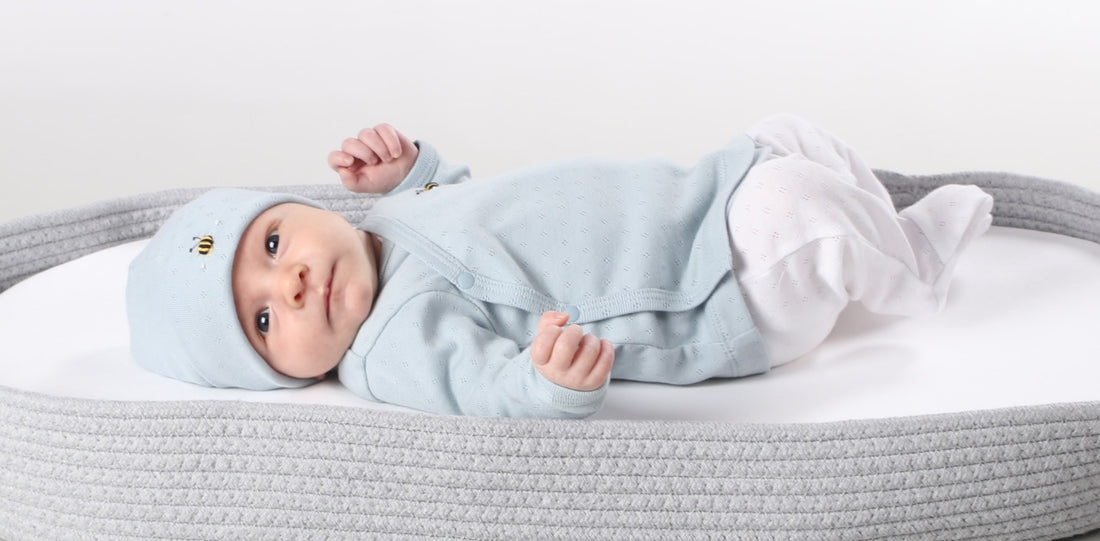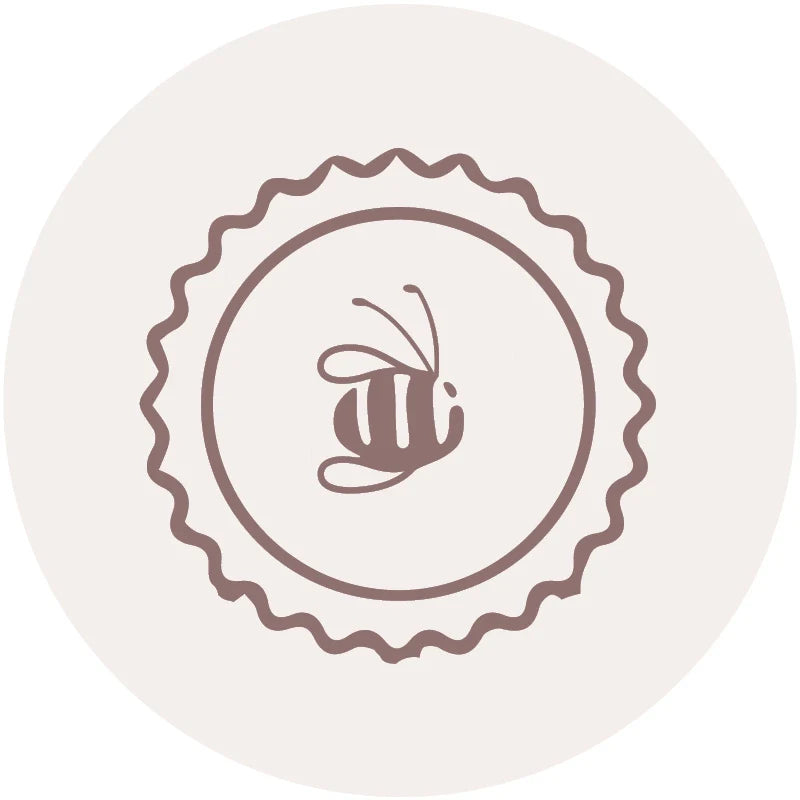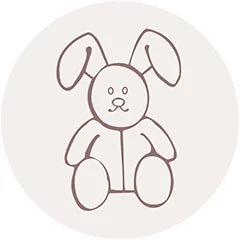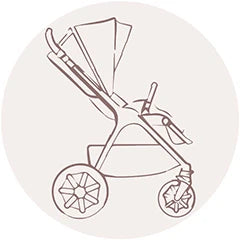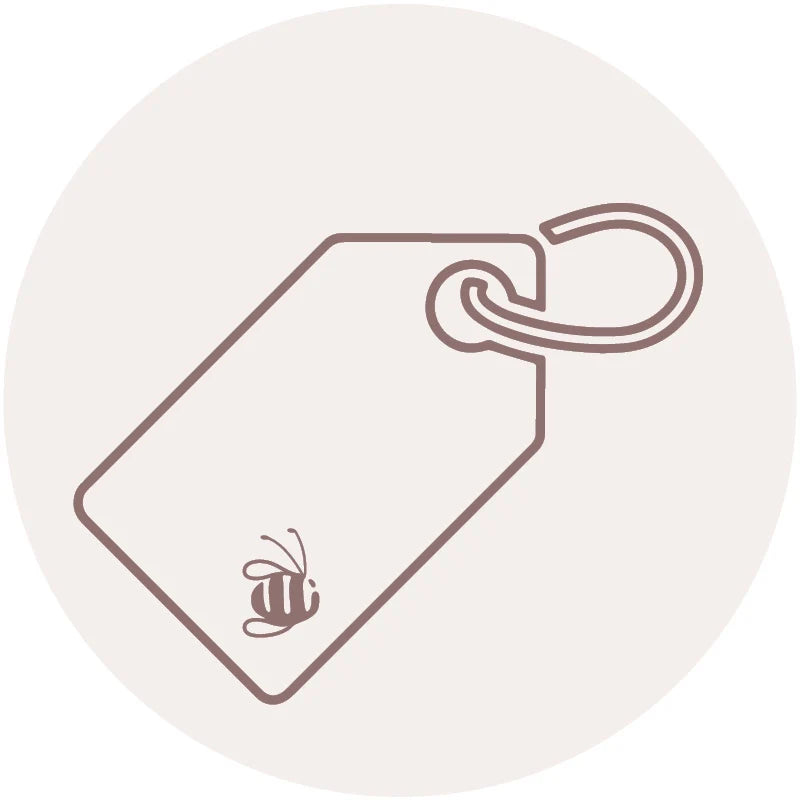Post
IT’S A WINNER BABY!
Stokke® Clikk™ High Chair wins Red Dot: Best of the Best In one of the world’s most prestigious design competitions, Stokke once again proved its excellence with the latest addition to our innovative line of seating, the Stokke® Clikk™ High Chair. Winning over the expert jury for the Red Dot Award, Product Design 2020, the Stokke® Clikk™ High Chair stood out amongst the 6,500 product entries and has been awarded the coveted Red Dot: Best of the Best for the highest quality and ground-breaking design. True to the motto “In search of good design and innovation”, only 1.2% of the objects entered received a Red Dot: Best of the Best. When asked what sets the Stokke® Clikk™ High Chair apart, lead designer Anders August Kittilsen commented, “The goal was to give families what they really need. The Stokke® Clikk™ High Chair is streamlined to provide exactly what you need when your child is about to learn how to sit on their own and start eating solid foods. We´ve removed all the features you don’t find necessary during the typical feeding period from about 6 to 36 months and focused on simulating babies’ development while offering convenience to the parents.” About the Red Dot Design Award With more than 18,000 entries, the Red Dot Award is one of the world’s largest design competitions. The international jury comprises experienced experts from different disciplines and has been convening for around 65 years in order to select the year’s best designs. The adjudication process lasts several days and is based on two essential criteria: The jurors test all the entries in order to assess not just the aesthetic but also the materials selected, the level of craftsmanship, the surface structure, ergonomics and functionality. Mealtime made easy We asked the real experts, parents, what they expect us to deliver upon in a new high chair. The feedback was unanimous, and we heard the pain points loud and clear. Combining parents’ input with our know-how, we’ve designed a high chair that answers the day-to-day needs of modern families during the typical feeding period. The result - the all-in-one, easy to assemble and easy to clean high chair that takes away the typical fuss of mealtime! Sleek, contemporary design, without any nooks or crannies means no more scrubbing and digging out leftovers. Simply wipe clean and pop the tray into the dishwasher. Three, simple to adapt, configurations offer optimal back and leg support for comfort and ergonomics at each age between 6 to 36 months. The deliberately minimalistic design offers the best balance of space and safety. The Stokke® Clikk™ High Chair allows for proper upright seating, encouraging natural movement and supports exploration as babies learn and develop at the family dining table. Stokke® Clikk™ High Chair – At A Glance Assembles in 1 minute, tool-free! Can be used from 6 months up to 3 years Adjustable footrest for comfort at each age Easy to wipe clean, dishwasher safe tray Includes everything - high chair, tray & harness Check it out on our site here
Learn moreCar Safety for Littlies
Car seats and safety tips for parents When you become a parent, keeping your child safe is your most important job, and safety in the car is particularly important. Most of us drive so regularly that we forget how dangerous cars can be – but car crashes are one of the most common causes of injury and death for children. Car seats are now more sophisticated and high-tech than ever before, which is good news when it comes to keeping your children safe. But as seats have changed, so have the rules and guidelines about installation and use. This is where it gets confusing – many parents are not sure about car restraint laws or best practices. You have to choose from a huge range of car seats, install them properly, then work out how to get your brand-new baby strapped in safely. It can be a minefield, so it’s a good idea to work out what you’re doing well ahead of time – you don’t want to be googling info on the way to the hospital. Here’s our guide to car safety for young kids in NZ. Car seat law in New Zealand Children are far smaller than adults, and they’re built differently as well. That’s why car seats are essential – they protect delicate bodies in case of an accident. Seat belts are designed to sit in the right place on adult bodies, but not on lighter, shorter children. They can actually cause damage to children’s organs in a crash. That’s why the law says that children in New Zealand must travel in an approved, appropriate car seat up to the age of seven . The seat must be installed correctly, and the child must be secured properly. After seven, she should use a booster seat until she is tall enough for safety belts to fit correctly. Safety tips for little ones Car seats are key, but there are other car safety considerations as well, especially as your child gets older. It’s important to never leave your baby or child in the car alone – even if you’re only leaving for a few minutes. Here’s what to remember: Install baby and child seats in the back seat, as this is the safest place – front airbags can be deadly to small children in a crash. Put your child in his seat and secure the straps every single time – even a short journey could be dangerous. Never leave children in the car alone, even for a short time – babies and small children can overheat and dehydrate very quickly if left in a car. In warm weather, make sure your car is air-conditioned, or keep a window open to provide airflow. As your child gets older, teach him to get out of the car on the footpath side if possible – if not, make sure he waits for an adult to get him out of the car. If you’re taking multiple children out of the car, teach them to keep a hand on the side of the vehicle while they wait. Don’t let children play with car doors or controls unsupervised. Activate child safety locks while driving if your car has them. The right car seat at any age When you look at the huge range of options, car seats can seem overwhelming. What’s right at each age? How do you install them correctly? How do you know when your child is ready for the next type of seat? The good news is, there’s actually a fairly simple progression of seat types for different ages – from 0-2 most babies should be in a rear-facing car seat, from two to around four or five they should be in a front-facing restraint, and after that, they should stay in a booster seat until they’re 148cm tall. Read our full guide to car seats here Rear-facing restraints Rear-facing child restraints are the safest option for small babies and toddlers. Because small children have large heads in proportion to their body size, a crash in a forward-facing seat can cause devastating damage to the neck and spine – so try to keep your child rear-facing for as long as possible. Experts recommend facing your baby backwards until she’s at least two, so if she outgrows her seat before then, you could think about buying a rear-facing seat with a higher height or weight limit. You can choose to use a rear-facing capsule-style seat for your new-born, or go straight to a convertible seat that takes you from infant to pre-school – or further. Rear-facing tips: Buy or rent an appropriate seat well before your baby is born – hospitals won’t let you leave without a car seat for your newborn. Read the instructions carefully and install the seat correctly – many retailers will help with installation or check to make sure your seat is properly fitted. Put the car seat in the back seat of the car if possible – front seat airbags can be seriously dangerous to babies and small children. If your vehicle doesn’t have a back seat, a rear-facing seat can be installed in the front passenger seat – but ask your mechanic to deactivate the airbag or move the seat back as far as you can. Don’t let small babies sleep in their car seats if you’re not driving, as the upright position can cause breathing difficulties in some cases. Always use a seat that’s appropriate to the weight and height of your baby – if you start with a capsule, you’ll probably need to switch to another rear-facing seat when your child is around six months old. Forward-facing car seats When your child outgrows his rear-facing position, you need to turn his seat around. You can tell he’s ready for the switch when the top of his head reaches the top of the car seat or the marked height limit, or when your baby’s weight reaches the limit for your particular seat. Forward-facing tips: Install the seat properly – don’t forget to use the tether strap if the seat needs one. Put the car seat in the back seat of the car unless there’s absolutely no other option – front seat airbags can be seriously dangerous to babies and small children. Always secure your child in the seat correctly – straps should sit flat and tight, and the central clip should be pulled up to sit in the centre of the child’s chest. Booster seats Unlike car seats, boosters don’t have a harness to hold the child in place – they just lift her into the right position to use the car’s seat belt. Your child is ready for a booster when her eye level reaches the top of her car seat, or when she reaches the recommended weight for your model of the seat. If your child grows out of her seat and you still want the safety of a child restraint, you can look for a seat with a higher maximum weight. Children should use a booster until they’re tall enough to use the car’s safety belts on their own – the belt should cross over the shoulder, rather than the neck, their legs should bend over the edge of the seat while their back reaches the seat, and the lap belt should cross their pelvis and thighs. Most children can stop using a booster at around 12 – or 148cm tall. Booster tips: Look for a booster seat with a belt guide to help position the seat belt on your child’s shoulder, rather than close to the neck Only use a booster seat with a full seat belt – lap belts will not hold them safely. Keeping your babies safe It may sound like a lot to learn, but keeping your children safe in the car is pretty straightforward once you get started. Just remember – try to keep them rear-facing and in a five-point harness for as long as you can. And if you’re confused about choosing the right car seat or installing it properly, talk to our expert team – we’re always happy to help.
Learn moreHelp from our Experts
The COVID-19 Lockdown can be a difficult and stressful time for any new parent. Website information can be confusing and it is hard to know exactly what product would be best for you and your baby. To make things a little bit easier and to ensure our customers get all the information and advice they need we are offering one on one consultations with an experienced team member. Our team members Charlotte and Rebecca have been working at the Dimples Store for over 8 years and have extensive knowledge of all of our products and brands. They will be able to compare products for you and be able to help you find the best product to suit you and your baby. They both are registered car seat restraint technicians, which means they know how to correctly and safely install car seats and can offer advice for installation and sale of car seats to ensure you get the correct seat for your car and child. If you would like to take advantage of this offer, please find out how to book your consultation below: How to book a consultation: • Email shop@dimples.co.nz with the products you are wanting further advice on or any enquiries you may have. • Our team member will then organise a date and time with you to be able to go through your enquiry. • If you do not want a zoom consultation they can answer your enquiry through email exchange or arrange a phone consultation with you.
Learn moreReduce the Risk of SIDS
How to help keep your baby safe Entering the world of parenthood comes with its fair share of anxiety, from wondering how different your new life will be, to the worry of being responsible for a new little person. Sudden infant death syndrome (SIDS), previously known as ‘cot death’, is the unexplained death (typically during sleep) of a seemingly healthy baby. While SIDS is a very real threat, with a little knowledge you can reduce many known contributing factors. Back to sleep You’ll no doubt hear this on repeat from midwives and Plunket nurses as soon as your little babe comes along and for very good reason. Babies who sleep on their stomachs are much more at risk of SIDS. While it’s not 100% understood exactly why experts believe it could be about re-inhaling stale air. Once your baby can happily roll over by themself, you don’t need to worry about sleeping positions any more. Make it a strictly smoke-free zone Smoking (and exposure to second-hand smoke) during pregnancy not only puts your baby at risk of health issues but increases the risk of SIDS too. It’s thought that nicotine can wreak havoc on a mechanism in their brain which senses a lack of oxygen and triggers breathing to start (called auto-resuscitation). So make sure it’s strictly a smoke-free zone when you’re pregnant and when your little one arrives, and that your family and friends are on board too. Welcome your new (temporary) roommate It’s widely recommended that your new babe bunks in with you (in their own safe sleeping space) for at least the first four to six months. This isn’t always practical for light sleepers, in which case a good breathing movement monitor set up in their nursery will give you peace of mind. A safe spot for slumber While room-sharing is recommended, bed-sharing isn’t. It can be so tempting to savour that extra time snuggled up in bed with your new babe, but bulky duvets, pillows and even an adult rolling can spell danger for little ones. Setting your baby up with their own safe space (like a portable Moses basket ) within arm’s reach is your best option. Be prepared to be suddenly jolted awake and find yourself sitting up in bed or a nursing chair with your baby in your arms – sleep deprivation can really grab hold of you in the early days. Sleeping with a baby on a chair or sofa is very dangerous, so to avoid this as much as possible, use the middle-of-the-night feeds as opportunities to clear out and edit that day’s photos on your phone (no doubt there will be plenty!) Your phone’s blue light will help keep you alert. Baby, it’s cold outside It’s important to make sure the room where your baby is sleeping is at a comfortable temperature. Bundling up babies at all times is an outdated theory – overheating is another substantial SIDS risk. Higher temperatures can put babies into a deeper slumber, making it difficult for them to wake if their breathing is obstructed. The recommended room temperature for a baby is 16 to 20 degrees, with around 18 degrees being ideal. To check your baby’s temperature, feel his back or tummy – it should feel warm. A great way to check the temperature of their nursery is with a combined nightlight/temperature sensor like the Moon Nightlight . Blankets (and everything else) be gone All those cute blankets, animal-shaped pillows and snuggly little toys that create a cosy-looking cot will need to stay in storage until your baby’s first birthday. Until then, all you need is a fitted sheet and wearable bedding like a Merino Sleep Pod to keep them warm. The key is to avoid anything that may cover their face and restrict breathing. Breastfeed if possible Experts aren’t sure why, but breastfeeding can significantly lower the risk of SIDS. The theory is that breastfeeding promotes the sucking and swallowing action, which develops muscles that keep the airway open while boosting brain development. Breastfed babies are generally lighter sleepers, too. This might not sound like a benefit at 2 am, but anything that helps reduce SIDS is a big plus. A big tick for pacifiers There tends to be negativity around using pacifiers, but they can not only be life-saving for unsettled babies during car trips, but also literally life-saving. Once again, it’s a bit of an unknown how pacifiers help, but there is a clear link – babies who use pacifiers are at lower risk of SIDS. As with breastfeeding, this could be due to more developed sucking and swallowing muscles that help keep airways open. If you’re breastfeeding, wait until this is well established (at least 4-6 weeks) before introducing a good quality silicone pacifier . Do what you can to reduce the risk While there are still a lot of unknowns with SIDS, being armed with what you can do to reduce as many risks as possible should put your mind at ease. Keep in mind that the risk of SIDS decreases after six months and is pretty rare after a baby’s first birthday.
Learn moreBaby Shower Gifting
The baby gifting gauntlet – how to get it right. Bright pops of primary coloured toys, sleek Scandi-style nursery decor, temptingly tiny booties and seriously drool-worthy bibs. It’s easy to get carried away by the abundance of cute when shopping for a new baby, but what do new parents really need? Choosing the perfect baby shower gift to help make the lives of soon-to-be exhausted parents easier and brighter doesn't need to be complicated. Sticking to some tried-and-true, useful items will have them praising you for your clever gift – day and night. Dress for success That adorable tutu with matching headband and ballet-style booties may seem irresistibly cute, but the reality of dressing and undressing a small baby (several times a day) is likely to have overly fussy outfits quickly relegated to the impractical pile. Top points are given for something that delivers on the baby clothing trifecta – cute factor, easy to put on or take off, and easy to wash. Items like our organic cotton romper will tick all three boxes with minimal effort. While it’s easy to be drawn to the itsy-bitsy doll-sized newborn clothing, new parents will appreciate having a stash of larger clothing their baby can grow into (and some babies may skip newborn sizing all together!) Consider shopping for clothing in the 6 or 12-month range, but beware of seasonal variations. Add a gift of your time – it’s truly mind-blowing how much washing a tiny person can create – help a new parent by offering to put on a load of washing, or simply help fold that endless pile. You are feeling sleepy While gifting the (often elusive and always cherished) necessity of sleep to a new parent isn’t usually possible, products that can help on this front are always appreciated. Most parents will find themselves working their way through a bevy of sleep-related products (swaddles, sleeping bags and sleep aids) to find what suits them and their baby best, so complementary products like sleepwear, our beautiful merino bee blanket or the multipurpose muslin swadle make great gifts. Our merino or cotton gowns are a clever way to dress a baby at night, making night-time nappy changes easy. Anything that saves tired parents from trying to match up dozens of domes in a dimly lit room will have them thanking you for making life that little bit easier. And yes, boys can wear gowns too! Add a gift of your time – Offer to take the baby off their hands for an hour post-feed, so they can catch up on a little sleep. Splish splash, it’s time for a bath The delicate skin of a newborn means bath time in the early days is less about colourful bath toys and more about gentle muslin flannels paired with non-irritating skincare. New parents usually have something in mind for larger essentials like a baby bath, but accessories (think an essentials baby pack or a cosy hooded towel ) always go down a treat. Add a gift of your time – Instead of stopping by for tea and a chat, watch the baby for half an hour so they can take an uninterrupted, leisurely shower. The messy business of mealtime Starting a baby on solids isn’t typically on the radar of parents-to-be, and the associated products don’t often feature on new-baby essentials checklists. This makes baby-feeding accessories seriously useful gifts with some longevity. In the first year of a baby’s life, food seems to be more of a fashion item (to be worn) rather than a source of sustenance, meaning a decent stockpile of bibs is essential. Pretty bibs like the this are perfect for catching spills and staying crumb-free while out and about, whereas the more industrious silicone bib offers the practicality of being dishwasher-safe and stain-resistant. Add a gift of your time – bring over a hearty, home-cooked meal that can be easily frozen or reheated. Exhausted new parents will truly love you for it. The days are long, but the years are short It’s so easy for those precious early years to pass by in a blur of broken sleep and nappy changes, which is why a keepsake baby book makes a thoughtful and memorable gift for parents-to-be. Our beautiful monochrome Marlee + Jo Baby Book allows parents to record everything, from their first thoughts when the new babe arrives, right through to favourite memories of the not-so-new babe’s first day of school. Add a gift of your time – Take your camera along to the baby shower and snap away. Compile and print these special memories for entry in the gifted baby book. Still not sure? Dimples gift vouchers are available for purchase online and in-store, and allow new parents to hop online and pick up those forgotten items...all while still in their pyjamas.
Learn moreMusic for Babies
Is it a myth or a must? You may have heard that Mozart in utero is essential to healthy brain development, and Baby Einstein on repeat will produce an intellectually advanced toddler. But is music for babies really a thing? Exposing babies and toddlers to music might not necessarily be intelligence-inducing, but it definitely has its benefits for both parents and babies. Here’s what the science really says! Music in utero From around 20 weeks into pregnancy, your baby’s ears start functioning – taking in all the familiar and soothing sounds of the womb and the outside world. That might be mum’s favourite music, the sound of her voice or the constant drum of her heartbeat. So, if classical music isn’t your thing, do you need to suffer through it in the later stages of pregnancy to produce a high IQ human? The jury is out on the intellectual impact of womb-tunes, but listening to music with your unborn babe can be a nice way to schedule some regular time to unwind and bond over your favourite melodies. As a bonus, using this time to de-stress gives you a valid excuse to belt out your greatest hits in the shower. If it makes you feel good, chances are your baby will love it too. While it might be tempting to share an earphone with your belly buddy, playing music through your stereo is a much better option. Amniotic fluid acts as a conductor and can make an earphone too loud for tiny ears. If you’re happy and you know it… We all know that music has the magical ability to transform your mood, and it can do the same for babies and toddlers. Even when they’re little, babies sway or bounce to the beat and can be calmed down with their favourite songs. Using the mood-altering magic of music can also be a helpful way to set up routines for babies and get toddlers on board with chores. Upbeat numbers can get things started in the morning, and special bedtime songs signal to toddlers it’s time to wind down and get ready for sleep. Similarly, music can make chores fun. Rather than asking toddlers to tidy up at the end of the day, take a leaf out of the childcare professionals’ books and learn a ‘clean up’ song – less nagging, more dancing! Learning through music Exposing babies and toddlers to music during their early years helps with learning sounds and the meanings of words. Songs like ‘Heads, shoulders, knees and toes’ expand their vocabularies and coordination, while singing the ABCs teaches sounds and early literacy. On the maths front, popular nursery rhymes are full of repetition, a great way for young brains to learn about patterns and what comes next. Lots of nursery rhymes also include numbers – it’s practically maths for babies! Getting physical Getting their tiny groove on helps toddlers build key motor skills like jumping, balancing and clapping. Body and mind work together as they move to the beat. Spatial awareness and social skills are also learnt through movements like dancing – avoiding bumps and noticing how other toddlers move in group settings. Music for bonding Life as a new parent can be all go, so it’s nice to schedule some regular bonding time and fun with music. If you feel lacking in the creative department, check out what’s on offer at your local library or church – many offer preschool music sessions which double as a great (and easy) opportunity for new mums to escape the house. Ears and imaginations Is there anything better than a toddler who is good at listening? Music cues toddlers to move and react, a great way to develop early listening skills. Similarly, songs that call for them to stomp like a dinosaur or snap like a crocodile sharpen their ability to listen and exercise their creative brains. The best musical instruments for your mini maestro Music doesn’t need to be expensive and can easily cost nothing. Aside from singing (free), other beats like clapping, clicking fingers or stomping are easy (and also free) ways to create music at home. Once you’ve exhausted those, there are plenty of things around the home that can make a serious sound – a good old wooden spoon and pot, or clanging two pot lids together. Looking for something slightly more tuneful? The best instruments for little fingers are things that can be hit or shaken. Think soft rattles for babies, simple wooden drums, maracas or xylophones. Music to your ears The good news is, there’s no real evidence that one type of music is better for your baby’s development than another – but there is evidence that music is a good thing overall. All that really matters is that you’re having fun and enjoying music with your little one. Because if you’re happy (and you know it), chances are your baby will be happy too!
Learn moreMaking a Baby First Aid Kit
10 essentials for your baby’s first aid kit Be ready for emergencies and trips away You’ve Pinterested your dream nursery, sussed the decor and ticked off all the big purchases like a cot, pram and capsule. The reality of being responsible for a tiny person can take a while to sink in, and usually, a first aid kit for your baby isn’t top of mind. While you might have a couple of items like a thermometer and tiny nail clippers on your radar, a comprehensive first aid kit will set you up for years to come. It’s also easy to pop in your bag for trips away. Be sure to include these ten essentials: Thermometer – a thermometer you can trust can give you so much assurance. A non-contact thermometer like the NUK Baby Flash Thermometer makes the process super easy, and can even be used to see how hot your baby’s bath or food are too! Nasal decongestant and saline spray – unfortunately, it's only a matter of time before your little one gets their first cold and it usually means trouble feeding and sleeping. Since it’s a good few years until they can learn to blow their nose (usually around aged 2), a nasal decongestant combined with a saline nasal spray can help de-stuff and make feeding and sleeping a little easier. Nail clippers – cutting tiny nails for the first time can be a truly frightening experience and even worse, they seem to grow at lightning speed! Having some specific clippers on hand to keep nails short will prevent him from scratching himself. Emergency contacts – avoid scrambling on your phone by keeping important numbers like PlunketLine , Healthline and your local GP in an easy-to-find spot in your first aid kit – consider taping them to the inside of the lid. Pain relief – some form of over-the-counter pain relief such as liquid paracetamol or ibuprofen in your baby first aid kit can come in handy at all hours of the day or night. While you should always consult a professional (either your GP or an after-hours service) before administering any type of medicine, having this at the ready for fevers and minor aches and pains saves a trip to the pharmacy. An oral syringe – getting medicine into a baby can be tricky. The Haakaa Oral Syringe is an affordable, reusable syringe that is easy to use and easy to clean. Tweezers – even babies can get splinters! Rubbing alcohol swabs – grab a stash of these sterilising wipes to keep thermometers, tweezers and scissors clean. Plasters and antiseptic spray – even before they’re on the move, cuts and scrapes can happen. When they start moving, cuts and scrapes seem to happen every day! Disinfecting these and covering them with a small plaster will help them heal much faster. Gas relief drops – when burping doesn't seem to cut it, try infant gas relief drops. Learn more – take a course In addition to a well-stocked first aid kit for your baby, going along to a course specifically designed for dealing with littlies in an emergency is a great investment. Organisations like Plunket and Red Cross regularly hold affordable short courses designed to give you the confidence and basic skills needed to deal with emergencies until help arrives.
Learn moreHow to Bath your Baby
Bathing your Newborn - Soothing, safe, and stress-free Bathing your baby is not only important for hygiene reasons, it’s also a great way to calm and relax them before bedtime. But when you first get home with a tiny, delicate newborn, baths can seem daunting. Getting the water temperature right, using the right products, holding a slippery baby securely – it can all be overwhelming if you haven’t done it before. The good news is, bathing is easy, as long as you follow a few simple safety precautions. Even better, you don’t need to bathe small babies every day. In fact, because their skin dries out so easily, too much exposure to water can actually cause irritation. Two to three baths a week is plenty for a newborn – just give them a gentle wash with a flannel on the other days. Here’s our guide to stress-free bathing from day one: 1. Fill your bath First, fill your bath with a few inches of warm water and place it somewhere safe and stable – the floor or kitchen bench works well. These days, there is a range of different baby baths to choose from – traditional models, convenient Flexi baths that pack away when you’re not using them, and the Shnuggle bath , which keeps baby upright in the water. 2. Test the temperature The ideal water temperature is 37°C. Warm and soothing, but not too hot for your baby’s delicate skin. Traditionally, parents test the water with the inside of their wrist, but you can invest in a water thermometer if you want to be sure. 3. Get your gear Before you undress your baby, make sure you have everything you need at arm’s reach – soft flannels or cloths, a gentle body wash , a clean baby towel , a fresh nappy, and PJs . You don’t want to be stuck trying to find something while you’re holding a wet, screaming baby. 4. Bring in the baby Get baby undressed. Before you place them in the water, use a flannel to drizzle a small amount over the back of their head. This way, going in won’t be such a shock. Gently lift your baby into the water, with one arm under their neck to support their head – your hand should be under their arm to make sure that they don't slip down. Keep that hand in place to keep the baby’s head out of the water while your other hand does the washing. If you’re using a Shnuggle bath , the sloping back, and bottom bump will help keep your baby upright, you just need to keep a hand on their chest to stop them slipping down. 5. Cleanse and protect Although some people prefer to stick to water for baby’s first few baths, it won’t necessarily be enough as your baby gets older. Even if they seem perfectly clean, sweat, skin cells, and other impurities can build up – particularly under nappies and in those chubby creases. Use a small amount of gentle cleanser or body wash to get rid of the grime. When their hair starts to grow, use a baby shampoo to keep it shiny and soft. 6. Top to bottom Using a clean, soft muslin cloth , wash baby’s face and head, gently wiping around each eye, around the nose and mouth, and behind the ears. Wash theirhair with cleanser or shampoo, and don’t forget the neck – dirt can build up there. Next, gently wash under their arms, followed by tummy and legs. Finally, wash their genitals and bottom, again making sure to gently wash between thigh creases. Rinse any leftover cleanser with a clean flannel or small cup of water. 7. Time to play If your baby is calm and the water is still warm, keep her in a little bit longer. Use a small jug or cup to pour warm water over their belly and chest, swish the water around them, and give them plenty of smiles – you want them to enjoy bath time right from the start. As they get older, you can add bath toys for them to grab as well. 8. Warm and dry When you’re ready to take baby out of the bath, lie a soft, dry towel on a soft surface or get your partner to hold it out. Use both hands to grasp your baby around their chest, supporting the head with your fingers. Lift them out and quickly wrap him in the towel. Because babies lose a lot of heat from their heads, it’s important to dry their hair first – that’s why hooded towels are a great option. Use the towel or a smaller cloth to carefully dry all your baby’s folds and creases – behind the knees, around the neck, and between the toes. Any moisture left behind could cause skin irritation or redness. 9. Moisturise and protect If your baby’s skin seems dry or irritated, now is the time to use a gentle, natural baby oil or lotion . Use a tiny amount and massage into baby’s skin, avoiding their eyes and nappy area. Before you dress them, it’s also a good idea to use a barrier cream to protect their delicate skin overnight. 10. Pyjama time Finally, dress your baby in a fresh nappy and cosy PJs – bath time is done! Extra safety tips Think about turning your home’s hot water temperature down, to avoid scalding or burns. Clean only what you see – don’t put anything inside baby’s ears or nose, and avoid pulling a baby boy’s foreskin. Never, ever leave baby alone in the bath, even for a second. Looking forward to bathing your newborn soon? Take a look at our baby bathing section for baths, towels, and everything else you need.
Learn moreNatural Clothing and Allergies
The best clothing choices for allergies Soft, natural, gentle Babies’ skin is soft, gorgeous – and sensitive. When they’re young, their skin is much thinner and more permeable than that of an adult, which is why it’s so susceptible to irritation and dryness. Although all babies have delicate skin, some have more serious skin conditions like eczema, hives, and other irritations. These increasingly common conditions can be caused or exacerbated by food allergies, and environmental triggers like laundry powders, soaps, and clothing. While the right clothing can’t cure eczema or allergies, it can help reduce the symptoms and make your baby more comfortable. Soft, natural fibres, organic fabrics, chemical-free processing and quality craftsmanship can help. Here’s what to look for: Naturally gentle Eczema-prone skin is irritated by harsh fibres and heat. Synthetic fabrics and thick weaves – like denim or hand-knitted wool – can trap heat, rub against the skin, and make symptoms worse. Look for clothing made of soft, naturally breathable fabric like cotton, linen, and hemp. Although thick wool can be irritating, finely woven merino clothing is gentle enough for most eczema-prone babies. In fact, because merino helps wick away moisture and regulate temperature, it can actually help reduce skin irritation caused by overheating. Choose organic Because babies’ skin is so permeable, it can absorb harsh chemicals from clothing. That’s why it’s important to choose organic fabrics as much as possible. Conventional cotton crops are treated with a range of pesticides, fungicides, and herbicides while they’re growing. No matter how much you wash clothing before wear, traces of these chemicals can remain in the fibres and transfer to your baby’s skin, potentially causing allergic reactions or general irritation. Avoid the issue by choosing pure, certified organic cotton as much as you can. Soft colours for soft skin During processing, cotton and other fabrics may be bleached, dyed, and treated with chemicals like softeners, fire retardants, and wrinkle or stain guards. These chemicals are designed to stay in the fibres of the fabric, which means they end up pressed against your baby’s skin, potentially triggering eczema flare-ups or irritation. Often, high-quality organic cotton and merino products are made without these chemicals to avoid these issues, and some manufacturers will list clothing as allergy-friendly or chemical-free. If you’re unsure, choosing white or undyed organic cotton or merino is the best option. Made with care Good craftsmanship is just as important as quality materials. Cheaply made baby and children’s clothing is often ill-fitting, with rough seams and scratchy labels – all highly irritating to sensitive skin. Quality clothing, on the other hand, is designed to fit comfortably. Look for clothing without tight sleeves, elastic at the cuffs, or high necklines – these can all chafe and irritate sensitive skin. Seams should be sewn flat and labels should be printed on the fabric or easy to remove. Go natural for extra care Whether your baby has allergies or not, you can’t go wrong choosing gentle, natural, soft clothing. You’ll keep them warm and comfortable, avoid harsh chemicals, protect their skin, and reduce the risk of irritation. At Dimples, all our baby clothes are made of natural fibres, with quality craftsmanship, comfortable, classic designs and minimal chemicals used in processing. Take a look now.
Learn more

